I headed to Wolli Creek in the mid afternoon and wandered down the Two Valleys Track from Girrahween Park to Turrella Reserve. I wanted to see what was out. It was a hot day – and there were not that many birds visible.

At and near Girrahween Park there were still quite a few Blotched Hyacinth Orchids out –
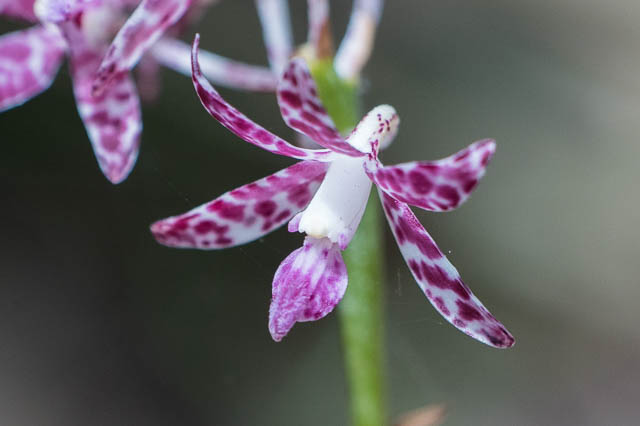
Along the track I did spot an unusual lizard –
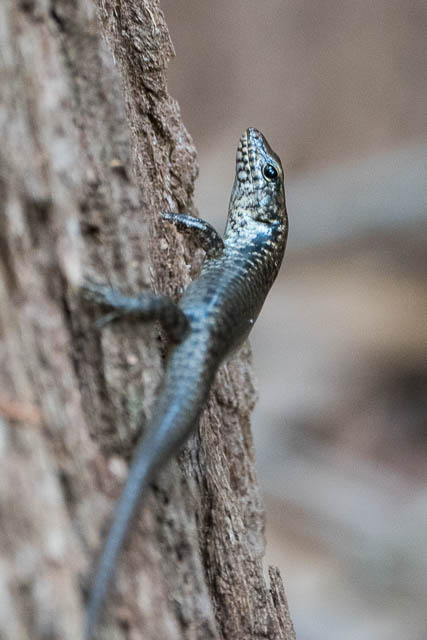
Bar-Sided Skink
Thanks to Ken Griffiths for identifying it as a Bar-Sided Skink.

I walked down to the Flying Fox camp and spent a bit of time photographing them – trying to get shots of them in flight. Some still had babies, but none of the ones did that I shot flying.

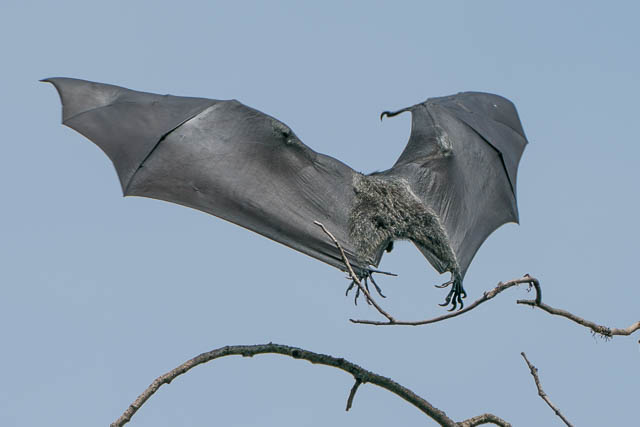

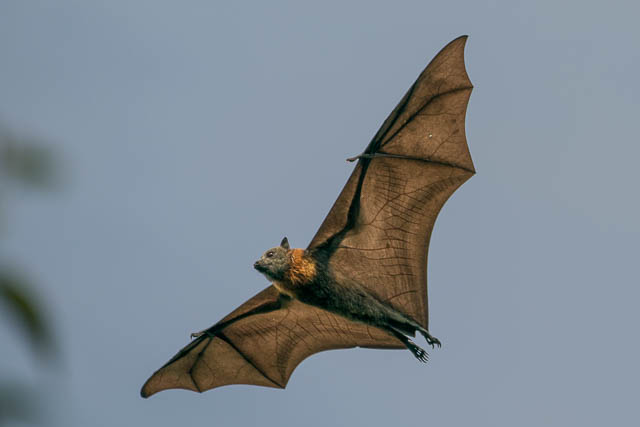
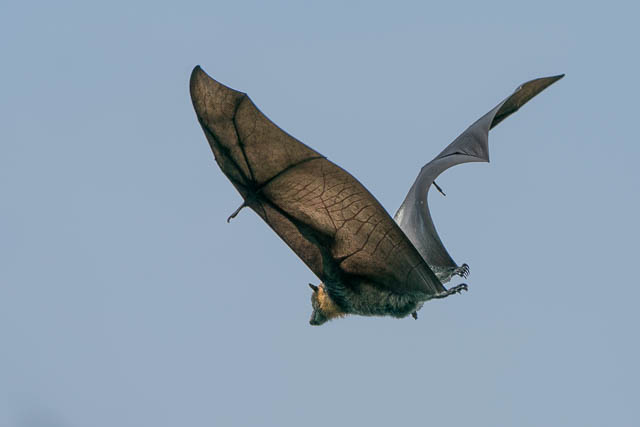
I wandered around the Turrella Reserve area for a while to see what birds were out – again not too many.
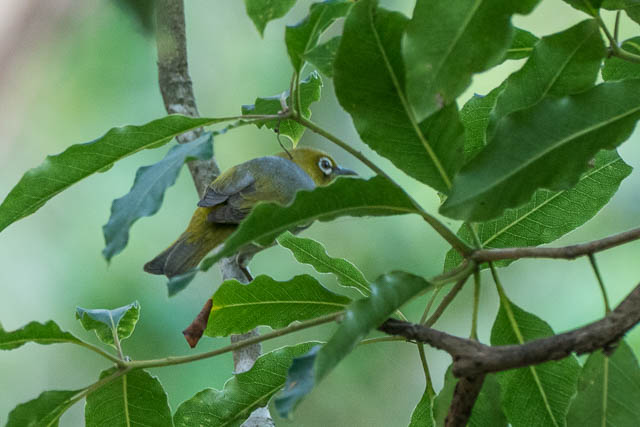
Silvereye
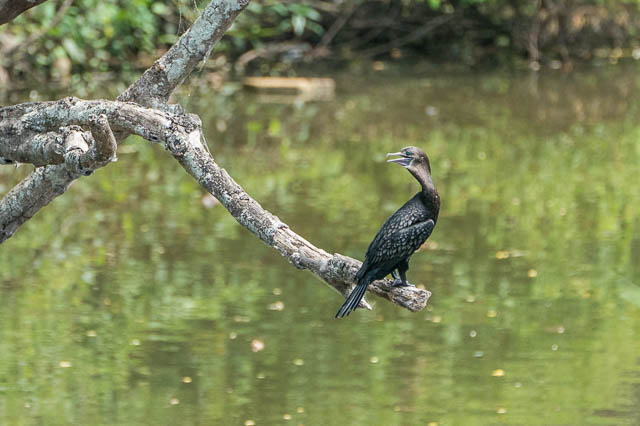
Little Black Cormorant
So I went to Turrella Station and caught trains to Tempe. Then I walked to the Tempe Wetlands.
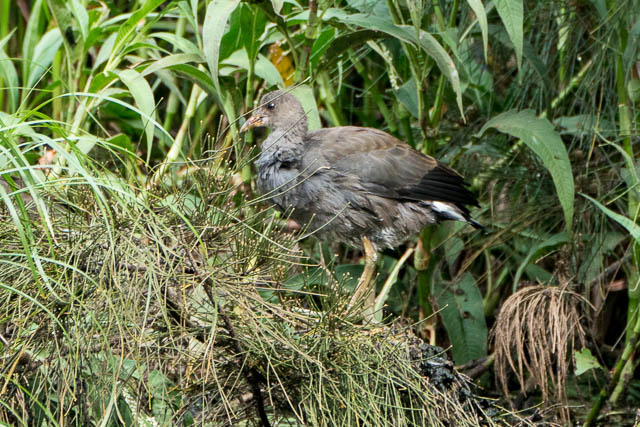
Purple Swamphen Chick
The Willie Wagtail chicks were still in their nest, but now much bigger. Their parents were around but did not seem to be feeding them. Perhaps they were a bit worried by my presence. So I wandered around the Wetlands a bit.
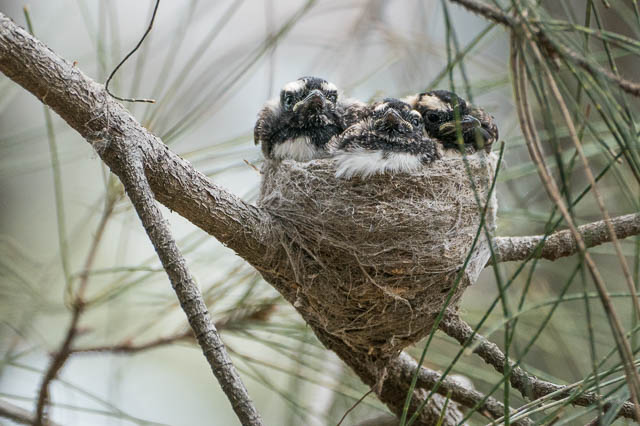
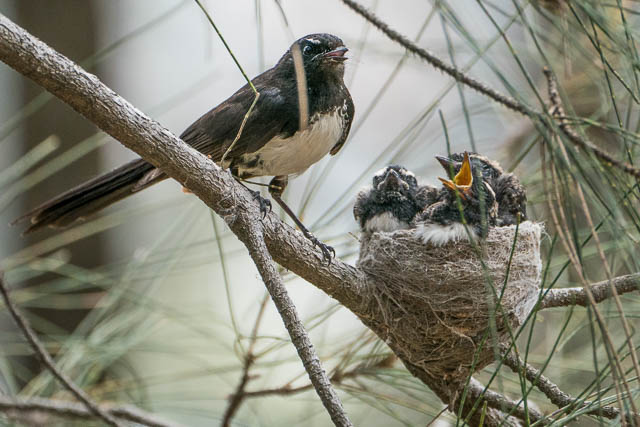
Again, things were a bit quiet. I could hear a lot of small birds in the bushes and reeds – but I think it was the wrong time of the day for them to go further afield.
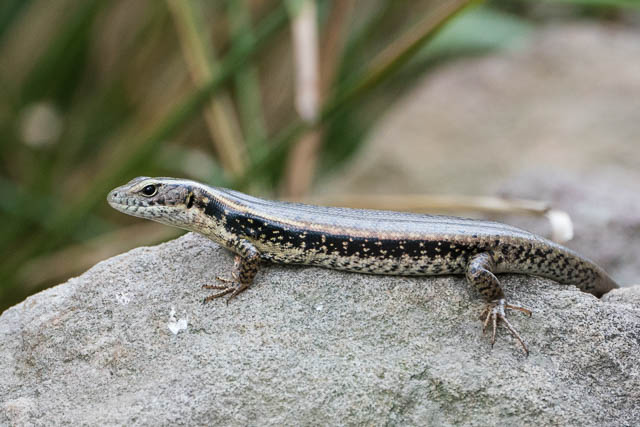
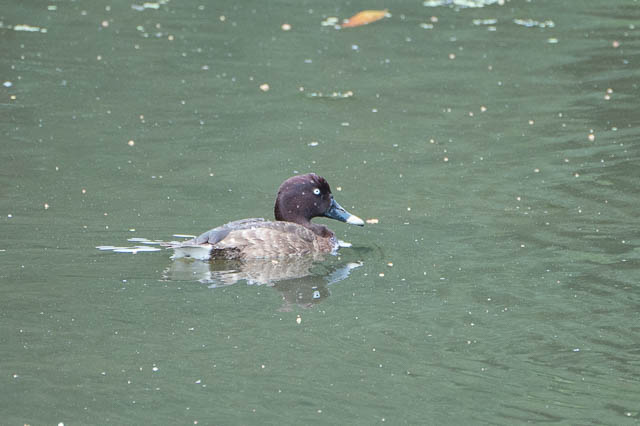
Hardhead
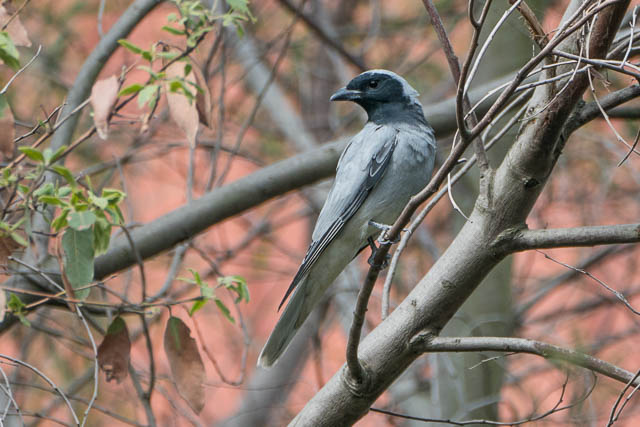
Black Faced Cuckoo Shrike
Back at the Willie Wagtail nest, I did mange to get some photos of both parents delivering food to their young. One parent catches some food –
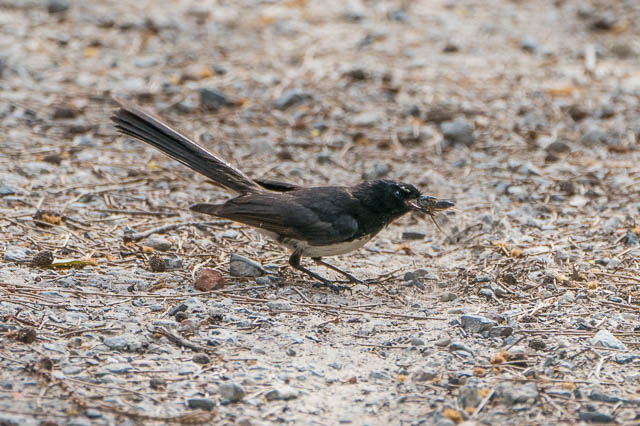
Then offers it to one of the chicks –
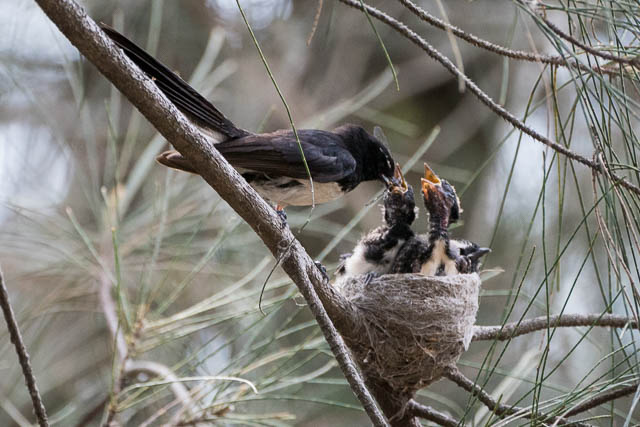
But then takes the food away, and offers it to another –
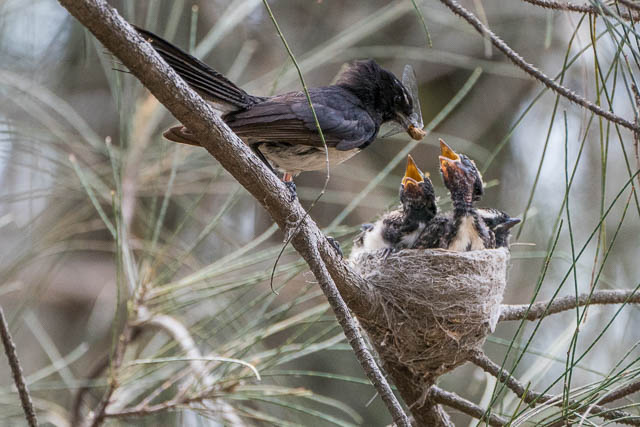

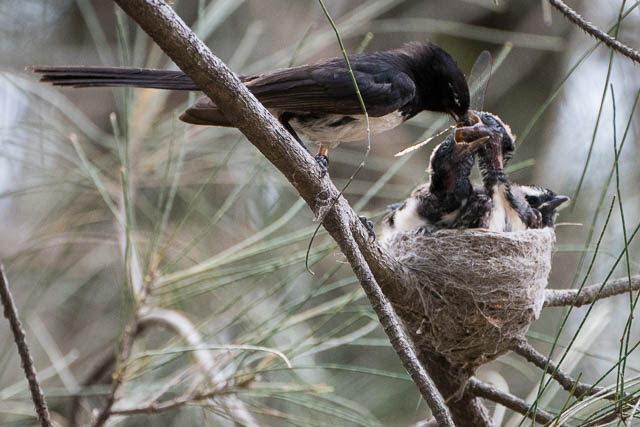
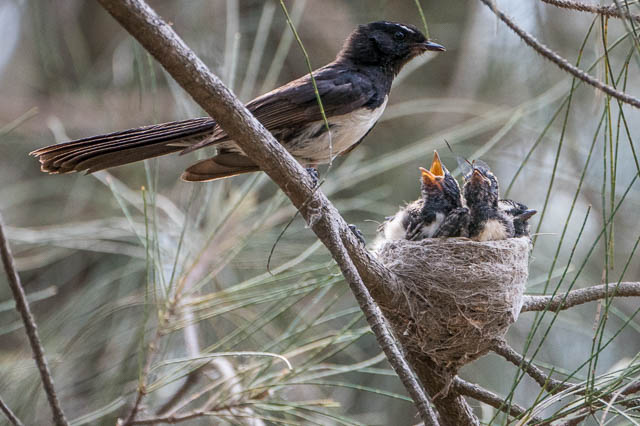
And the other parent –
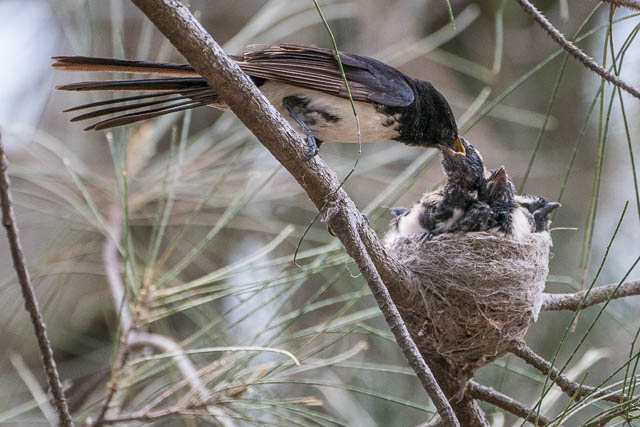
Doing a little research on Willie Wagtails, it seems the young stay in the nest for about 2 weeks, then take about an another 2 weeks to fledge. The young hang around till their parents produce another clutch of eggs, then they are driven off. And the adults usually produce up to four clutches of 2 – 4 eggs per season (July to December). The eggs are incubated by both parents and they take about 2 weeks to hatch. The adults usually pair for life.
